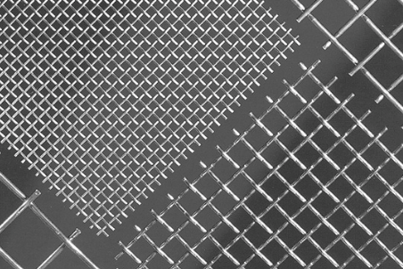Building the Best Kitchen Sieve: Why Use Woven Wire Mesh?
While it may seem straightforward at first glance, cooking requires precision and patents. Depending on what ingredients are being used, a variety of tools will need to be used to ensure each measurement and pour is, in fact, precise.
Kitchen sieves, for example, are a must-have for those that love recipes that involve the use of dry ingredients and certain liquids. This is because they make these various ingredients easier to manage.
Knowing that, why is woven wire mesh so vital to the functions of a kitchen sieve?
W.S. Tyler is a manufacturer of woven wire mesh products with 150 years of experience. Throughout the years, we've worked to help customers find peace of mind about the woven products they use.
For this reason, we wrote the following article to highlight how woven wire mesh benefits the functionality of a kitchen sieve. It will cover:
- What a kitchen sieve is
- The functions of a kitchen sieve
- What woven wire mesh is
- The benefits of a woven wire mesh kitchen sieve
- How much woven wire mesh costs
What Is a Kitchen Sieve?

A kitchen sieve is a screening tool that typically features a coned or domed mesh screen that is attached to a handle. They are designed to facilitate various cooking techniques by separating, aerating, and filtering various ingredients.
How Does a Kitchen Sieve Work?
Kitech sieves can be used to carry out two functions. These functions are sifting dry material or straining liquids.
When working with and storing dry material, such as flour or powdered sugar, moisture in the air can cause the individual particles to agglomerate. This agglomeration can remain intact even after being combined with other ingredients, which can throw off a recipe.
Kitchen sieves work to break down this agglomeration by causing the particle clusters to collide with the surface of the wires and the inner walls of the pore openings. The resulting effect is a free-flowing material with the uniform consistency needed to perfect recipes.
When working with liquid ingredients, such as jellies and jams, you may encounter situations in which solids like seeds and fibers are in excess. These solids can make for an unpleasant experience.
Kitchen sieve can be used to strain these liquids, removing the solids. As the liquids are poured onto the mesh screen, the liquid passes through while the solids larger than the pore openings are retained with the sieve.
What Is Woven Wire Mesh?

Woven wire mesh is a network of individual metallic wires that become interwoven after undergoing a centuries-old weaving process. As this process is heavily monitored, it has become known for its rigid, precise pore openings.
One of the key features that make woven wire mesh a sought-after material is its customization. Parameters such as weave pattern, mesh count, wire diameter, aperture size, etc., are calculated based on the needs of the customer before being woven.
Customers also have the opportunity to enhance the performance of their mesh with value-added services. These services include welding, calendaring, heat treatment, forming, and more.
Why Use Woven Wire Mesh Kitchen Sieves?
It isn't uncommon to see the mesh screens of a kitchen fabricated from materials such as nylon and plastic. These materials are typically cheaper and more readily available.
So why consider woven wire mesh? Well, fabricating the screen in your kitchen sieves out of woven wire mesh allows you to deliver an ideal balance of durability and accuracy.
Over time consumers will find nylon and plastic begging to wear and break, especially when subjected to more abrasive materials. As it is typically constructed from a stainless steel alloy, woven wire mesh has the ability to maintain its surface structure throughout its lifecycle.
The stainless steel construction even helps combat cuts and tears when placed in kitchen drawers containing sharp objects.
This durability also works to ensure the pore openings are preserved, and their accuracy stands the test of time. As a result, users can rest assured knowing their kitchen sieves will be able to accurately break down particle agglomeration and filter unwanted solids for years to come.
Again, because other materials lack the same durability, the accuracy of these screens will worsen with prolonged use.
How Much Does Woven Wire Cost?
If you are inquiring about wire mesh with the intention of integrating it into a kitchen sieve design, it is important that you first know that there are three main avenues to purchase woven wire mesh: bulk industrial rolls, cut-to-size pieces, and fabricated components. Both rolls and cut-to-size pieces have similar influences that dictate cost, whereas fabricated components have their own.
Those looking to fabricate their own wire mesh kitchen sieve screens in-house will be best accommodated by either rolls or cut-to-size pieces. With that, the following are responsible for how much your mesh costs:
- Roll/piece dimensions
- Mesh specifications
- Compliance requirements (i.e., DFARS)
- Value-added service requirements
- Order Quantity
To that end, if you are unable to fabricate the required wire mesh kitchen sieve screen components in-house, you can have the wire mesh supplier fabricate the mesh component for you. If this best accommodates your wire mesh requirements, you can expect the following factor to influence cost:
- Required fabrication
- Required external fabrication
- Value-added services
- Component profile
- Mesh specifications
- Layer configuration
- Order Quantity
- Labor
Witness the Sieving Possibilities of Woven Wire Mesh Firsthand
Kitchen sieves are tools designed to sift or strain various ingredients, allowing cooks to produce successful meals by making the ingredient easier to manage. The rigid, precise pore openings work to break down particle agglomeration and screen unwanted solids from liquid ingredients.
Now, as there are several screen media options to choose from, woven wire mesh may not best accommodate your needs. To get a better idea of how woven wire mesh can benefit the kitchen sieves you produce, you can and should request samples of variating wire mesh specifications.
With over 150 years of wire weaving experience, W.S. Tyler is here to help you overcome the frustration and uncertainty you may have about your kitchen sieve's screening performance.
Learn how you can get your hands on wire mesh sample in the article below:
About Ronnie Brown
Ronnie is the Content Writer for W.S. Tyler and has four years of experience as a professional writer. He strives to expand his knowledge on all things particle analysis and woven wire mesh to leverage his exceptional writing and graphic design skills, creating a one-of-a-kind experience for customers.




